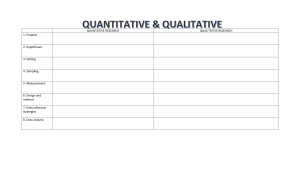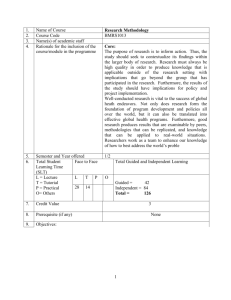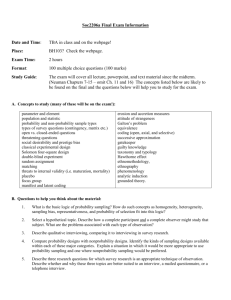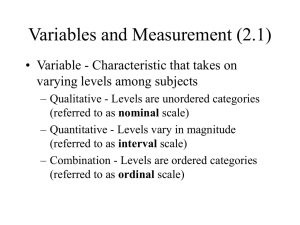Chapter 1
advertisement
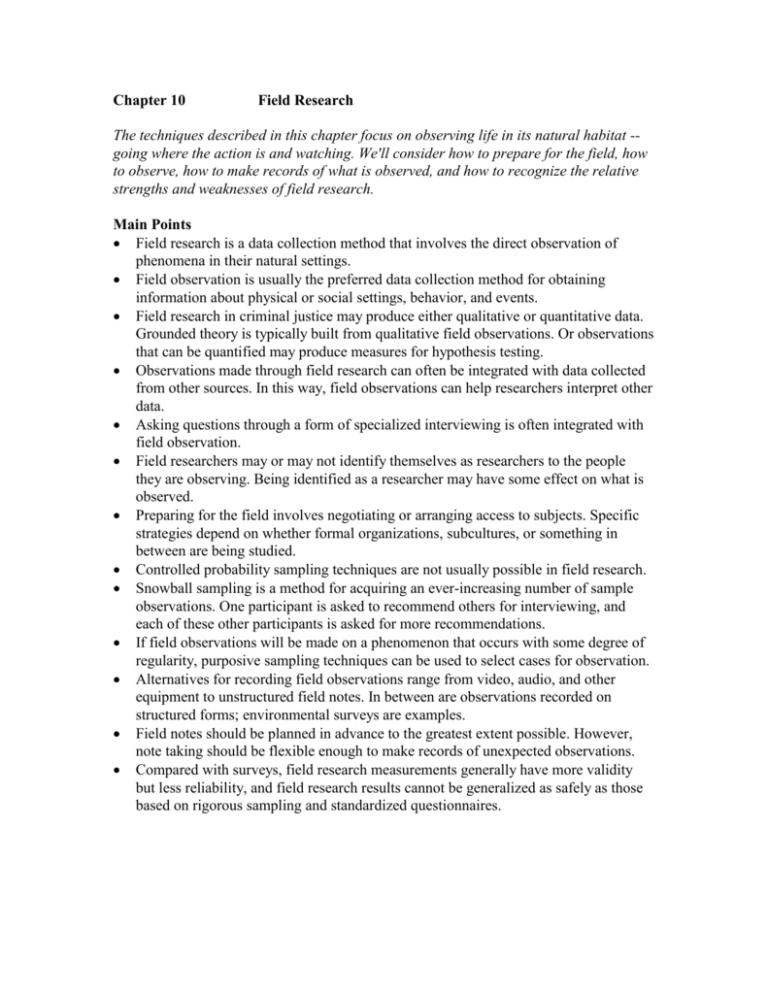
Chapter 10 Field Research The techniques described in this chapter focus on observing life in its natural habitat -going where the action is and watching. We'll consider how to prepare for the field, how to observe, how to make records of what is observed, and how to recognize the relative strengths and weaknesses of field research. Main Points Field research is a data collection method that involves the direct observation of phenomena in their natural settings. Field observation is usually the preferred data collection method for obtaining information about physical or social settings, behavior, and events. Field research in criminal justice may produce either qualitative or quantitative data. Grounded theory is typically built from qualitative field observations. Or observations that can be quantified may produce measures for hypothesis testing. Observations made through field research can often be integrated with data collected from other sources. In this way, field observations can help researchers interpret other data. Asking questions through a form of specialized interviewing is often integrated with field observation. Field researchers may or may not identify themselves as researchers to the people they are observing. Being identified as a researcher may have some effect on what is observed. Preparing for the field involves negotiating or arranging access to subjects. Specific strategies depend on whether formal organizations, subcultures, or something in between are being studied. Controlled probability sampling techniques are not usually possible in field research. Snowball sampling is a method for acquiring an ever-increasing number of sample observations. One participant is asked to recommend others for interviewing, and each of these other participants is asked for more recommendations. If field observations will be made on a phenomenon that occurs with some degree of regularity, purposive sampling techniques can be used to select cases for observation. Alternatives for recording field observations range from video, audio, and other equipment to unstructured field notes. In between are observations recorded on structured forms; environmental surveys are examples. Field notes should be planned in advance to the greatest extent possible. However, note taking should be flexible enough to make records of unexpected observations. Compared with surveys, field research measurements generally have more validity but less reliability, and field research results cannot be generalized as safely as those based on rigorous sampling and standardized questionnaires.
